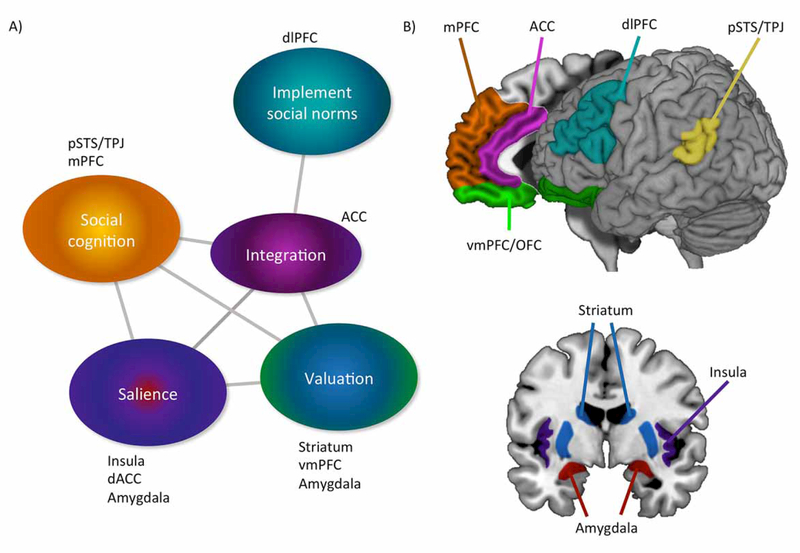Figure 1:
Cognitive architecture and brain regions underlying social decision-making and morality. Schematic diagram (A) and color-coded cortical and subcortical areas (B) with their respective roles in decision-making. The salience network is anchored by reciprocal connections between the amygdala, anterior insula, and dorsal anterior cingulate cortex (dACC). It coordinates widespread shifts in neural recruitment in response to motivationally relevant cues. The ventral striatum, amygdala, ventromedial prefrontal cortex (vmPFC), and orbitofrontal cortex (OFC) update and maintain stimulus-value associations, which are essential to reward learning. The posterior superior temporal sulcus (pSTS), temporoparietal junction (TPJ), and mPFC are core nodes underlying social cognitive functions, especially mental state understanding. The ACC is an integrative hub which receives inputs from these diverse regions and is critically involved in computing the anticipated reward value of alternative actions, particularly in situations where action-outcome contingencies vary. The dorsolateral prefrontal cortex (dlPFC) dynamically contributes to cognitive control and instigating goal-direct behaviors. In the context of social decision-making, dlPFC is critical for implementing social norms.

